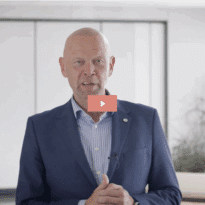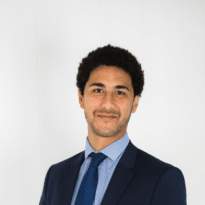Kim Bendall of The Paraplanners talked to Rob Kingsbury about being catapulted into running the business and balancing paraplanning with being a company director.
One evening in Feb 2014 Kim Bendall, then senior paraplanner with outsourced services firm The Paraplanners, received a telephone call from the firm’s owner Richard Allum saying he was seriously ill and could she take over running the business while he was off work.
Coming out of the blue it was “a real shock”, Kim says. “Alongside my concern for Richard I had never run a business before and it really was a step-up-to-the-plate moment. His words to me were: ‘I want you to run the business. Make the decisions you think I would make and I will be in touch with you when I can’.”
Kim found herself pitched full on into running the business and having to think on her feet.
“At the time Richard was a typical small business owner, everything about the business was in his head. There were no procedures written down or formal training in place, simply because the company had grown organically and we’d never thought about it. Like many businesses, it never occurred to us that we needed a contingency plan,” she admits.
Being an illness there was no way of knowing how long Richard would be off. It could have been two weeks or a month but it turned out to be four months before he came back part-time and six months before he took on a relatively full-time role again, she says.
“I can honestly say that 6 months was the most stressful I’ve ever experienced. Not only did I not know the first thing about running a company but I also had no access to things like the bank account, so I couldn’t pay myself or my colleagues.”
Fortunately, she adds, while she dealt with most of the running of the business, Richard was able to do things in the background until they were able to meet and he handed over all the access that was needed to run the company.
While she describes not knowing how long she would have to hold the fort as “the worst part”, there were plenty of other issues she had to deal with. A key one was managing client communication. “When a client has been used to dealing with the business owner and he is going to be away for an indeterminate period of time, clients naturally get jittery. Reassuring the clients and making sure all the work was of the same high quality as they were used to and delivered on time was crucial to keeping the business running,” Kim says. “It wasn’t just a case of ‘business as usual’, we were having to be ‘better than usual’ to show clients we were even more on the ball and they could rely on us to continue to deliver.”
That meant maintaining the workflow. This posed another difficulty. At the time they were a team of four people and Richard was a hands-on paraplanner in the team, who had often been working up to15-hour days sometimes six days a week. Somehow the rest of the team had to assimilate that caseload within their own working days.
Kim describes the scene: “Myself, Kat (Mock), Gemma (Dennis) and Claire (Goodwin), who had only just joined the company and was fairly new to outsourced paraplanning, had to knuckle-down and get the job done. It was a seriously hard time. I was working 15-hour days, sometimes seven days a week, trying to deal with the paraplanning we had to do and get to grips with running the company, and the rest of the team were putting in massive amounts of overtime just to get us through it; they were brilliant.”
Kim admits there were times when she thought she’d not get it done and she would have to stop. “There were a few occasions when it all seemed too much – because when you’re under that much pressure it can have a massive affect across everything, your personality, your sleep and health, your relationships. But what actually got me through was the support from my colleagues and my other half, Ralph – and also from Richard, on the occasions when we were able to talk. It was a tough period but what really got us through it was a team effort,” she says.
In recognition of what Kim had done to step in and keep the business going, when he returned to the business Richard made her a co-director and offered her the opportunity to take a share in the company and she took on director’s responsibilities.
“We’d always had a plan that at some point that would happen in any case,” Kim adds, “but the events that occurred accelerated the process. I think we both realised that for the good of the business things needed to be brought forward and for the workload to be spread across both our shoulders. I think we complement the way each other works. We have the same ethos and ethics and we’re looking in the same direction. But we go about it very differently; He’s full of enthusiasm and likes get stuck straight into things, whereas I’m more cautious and (over)analyse all possible outcomes of a decision. Between us, I think it makes for a good balance in the company.
“That said, Richard has pushed me to do things that were outside of my comfort zone, such as standing up and speaking in front of a room full of people, to the extent that I don’t worry about doing that now. We help each other and it means in terms of running the business we work really well together.”
Being a company director
While her first experience of running a company was a baptism by fire, Kim says she has now found her feet, although she adds that being a company director “is a lot harder than people realise. It’s certainly given me a lot of new respect for people who have been my former bosses and directors.”
Kim is still a hands-on paraplanner but company related matters take up a large proportion of her time. You have to work long hours – typically 9-10 hours straight. Also, it changes the way you view things and your priorities. When you are an employee your focus is naturally upon you and what the role means to you. As a director, you have to see the bigger picture. Now my priority is the sustainability and the continuity of the business, because I know there are people relying on the business to pay their mortgage and for their welfare.
“It’s also harder emotionally, because now I have to deal with any client issues and make decisions on behalf of everyone. The realisation that every decision I make has a butterfly effect and that it’s not just everyone in the firm but also our clients who depend on the company, is a big responsibility.”
Two years on from the crisis, Kim says the business is in “a good place now”. The demographics of the company have changed. Richard is still the managing director, overseeing the direction of the company as a whole, including its finances, sub companies and the projects that it undertakes. “In simple terms he does all the big stuff,” Kim says. “I am the operations director, so I manage the outsourced paraplanning side of the company, the client relationships, the team and the day-to-day workflow. I have also developed procedures for the running of the business and implemented a contingency plan, although we hope never to need it again!
“Operationally, we take a whole team approach to everything we do. That’s key to the way we work. We try to mix it up so that any of us can work with any client. We find that works well with our size of company, particularly as we are working from home all over the country.
“That said, every client has one case manager, so they know they can call one person to get things done.
“It’s not important who does the work as long as it always looks and feels the same. We work very hard on having a central process and a centralised language as well, so that every report that comes out from us could have been written by any paraplanner in the company. Consistency is really important.”
Part of that process is also peer review. Every piece of content that comes out of this company is proof read by at least one other person. “We spend a lot of resource on that but we see it as important to maintain the very high quality we want to provide to our clients. And we’re really tough proofers. But it’s good for our clients,” Kim says.
“We also like to get the team involved in the company. We are very open with them about where the company is going, how we’re doing and we like them to feed back into the mix. So we’ll ask them for ideas and help change what we do for the better.”
How Kim met Richard
Kim started her career around 20 years ago working for an accountancy firm. The firm also had a financial services arm – “which looked really interesting and fun” Kim says, and when she got to a junction where she had to make a choice whether to go the Chartered Accountant route or not, she decided financial services was where she wanted to be. An opening in the financial advice arm of the firm saw her move into a financial administration job but that quickly turned into a paraplanning role.
“My bosses at the time were very forward thinking and progressive people and they had heard of this thing called paraplanning – mainly from the US and Australian markets – and they said they wanted to introduce it to the firm. They asked me to do it and literally said create your own job description. I viewed it as a bridge between advising and administration, which subsequently is how the paraplanning market has evolved.
“I was encouraged to get my qualifications and I was lucky in that I had a fantastic head of operations at the firm, a woman who became my mentor, because she showed me that if I became as qualified as I could I would be more marketable and have a better career.”
Having obtained her diploma, Kim took the often pre-planned route at that time and started advising – although on a half and half basis, so 50% of the time she was still paraplanning.
“It was well and truly pre RDR and I found myself in a very sales-orientated world, where I was heavily targeted and I didn’t feel comfortable working in an environment where I felt pressured to give compromised best advice in return for commercial gain for the company. So I changed firms and moved back into paraplanning.”
In the 2000s, Kim says, being a paraplanner was quite a lonely place to be “because there were so few of us in the country. There was no voice in the industry or peer group I could easily talk to and I just didn’t know if other people were doing things in the same way or whether other paraplanners did things totally differently.”
It was her boss who inadvertently introduced her to Richard Allum in 2011. “Richard was presenting a series of workshops on paraplanning for AXA Wealth and my boss practically forced me to go,” she says. “It was a real eye-opener. It was the first time that I saw what other paraplanners in the industry were doing. Bearing in mind I’d totally made up what I thought a paraplanner should be doing, it was a real relief to me to sit in a room with all these other people and realise they were doing the same thing.”
Alongside the paraplanner training workshops, Richard was also trying to build a community and get paraplanning on the map, says Kim. “I felt I had a real empathy with Richard in terms of not just the way he worked but also what he was trying to do for paraplanning, so I approached him to see if we could work together. Four years later I’m his co-director and a shareholder in the company. We’ve learned a lot from each other over that time and as well as colleagues we’ve become firm friends.”
What’s a typical day for Kim?
I’ll start work about 8.30am. I’ll have breakfast at my desk and catch up with emails and the work in the system and what needs to be looked at that day.
At 9.25am I have a very quick catch up via Skype with Richard re the company related matters and what we need to do that day.
Then at 9.30 the rest of the team join the conversation and we discuss the cases being worked on that day, which gives me an indication of the capacity within the team and where it lies. We also use it as an opportunity to have a natter and a laugh and go through what’s coming up for the company.
Because we all work remotely and only get together as a team every six months, that time in the morning is very valuable.
Around 10am I’ll make a start on the tasks that I have to do that day. This will generally involve communicating with advisers on active cases and writing reports.
Around 12pm I’ll have a working lunch, when I’ll use the time to do company matters, such as the accounts, marketing or business development projects. I also use the time to study. We build in an hour’s CPD time into everyone’s week.
In the afternoon, I’ll resume work and report writing.
Throughout the day I will get various queries from the team. I’ll also follow up potential client enquiries.
Around 4pm I will update the workflow systems, check all the relevant cases have gone out, and add any completed cases to our invoicing system.
About 5.30pm, Richard and I talk again, so we are both aware of what’s gone on during the day and where we are with things.
I will tend to finish work by 6.30pm, when I’m dragged away from my desk by my other half.





























